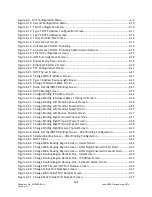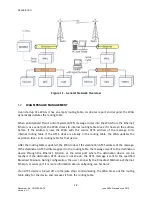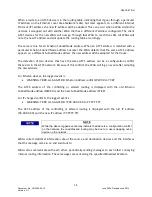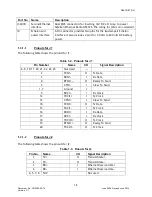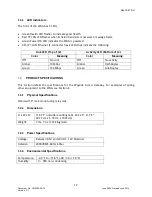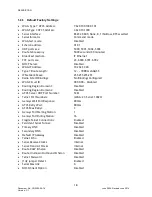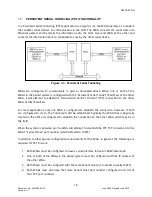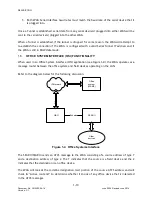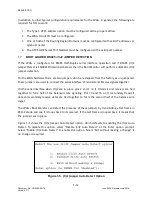
DESCRIPTION
1-3
Document No.: COM-00-05-16 June 2006, Revised June 2014
Version: C.1
When a route to an ATCS device is in the routing table, indicating that it goes through a particular
IP address on the Ethernet Local Area Network (LAN), but later appears on a different Internet
Protocol (IP) address, the new IP address will be adopted. This can occur when a WAG within the
network is swapped out with another WAG that has a different IP address configured. The client
ATCS devices for the new WAG will now go through that WAG to reach the LAN. All WAGs will
note the new IP address and will update the routing table accordingly.
The same is true for an Echelon Subnet/Node address. When an ATCS address is matched with a
particular Echelon Subnet/Node address but later the WAG detects that the same ATCS address
appears on a different Subnet/Node address, the new address will be adopted for that route.
The detection of two devices that have the same ATCS address can be a configuration conflict
that exists in the ATCS network. Because of this conflict, the WAG will log an event after adopting
the new address.
For Echelon devices, the logged event is:
•
WARNING: 7.RRR.LLL.GGG.SS.DD Echelon Address conflict WW.XX to YY.ZZ
The ATCS address of the conflicting or altered routing is displayed with the old Echelon
Subnet/Node address (WW.XX) and the new Subnet/Node address (YY.ZZ).
For IP changes/conflicts, the logged event is:
•
WARNING: 7.RRR.LLL.GGG.SS.DD IP XX.XX.XX.XX to YY.YY.YY.YY
The ATCS address of the conflicting or altered routing is displayed with the old IP address
(XX.XX.XX.XX) and the new IP address (YY.YY.YY.YY).
NOTE
While the above logged events may indicate that there is a configuration conflict
on the network, the re-addressed routing may be due to a user swapping out a
device on the network.
WAGs collect statistical information about the source and destination devices and the interfaces
that the message came in on and went out to.
WAGs also communicate with each other, periodically sending messages to each other conveying
internal routing information. These messages are sent along the specified Broadcast Medium.







